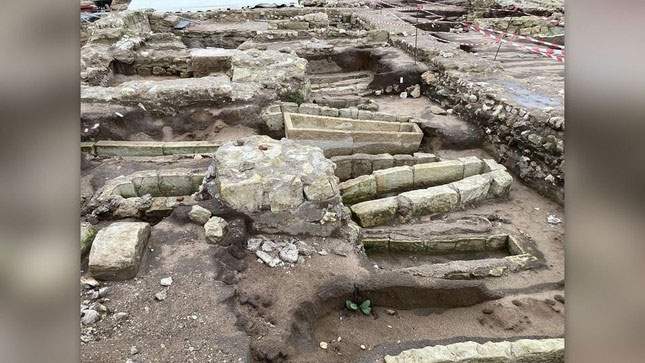Excavations of a medieval monastery in France have found more than 1,000 graves, including those of victims of the plague as well as the ruins of a nearly 1,200-year-old village.
Excavations at Beaumont Abbey show that the abbey was in use for nearly eight centuries before the events of the French Revolution closed it. This is the first time a European monastery has been fully excavated, providing new information about the development of Catholic monasticism.
Located outside Tours in France’s Loire Valley, about 178 kilometers southwest of Paris, Beaumont Abbey was founded in 1002 on a site that had been occupied by the village of Belmons since at least 845. History shows that the monastery grew rapidly, becoming the largest community of nuns in the province.
 The coffins have just been exhumed. (Photo: Copyright Jean Demerliac, Inrap).
The coffins have just been exhumed. (Photo: Copyright Jean Demerliac, Inrap).
Yet in 1789, in the midst of the French Revolution, in which Louis XVI and Marie Antoinette eventually lost their heads, the convent was confiscated by the state and the remaining 46 nuns at Beaumont were expelled. The church and associated buildings were finally demolished in the early 19th century.
A unique ensemble
Archaeological excavations began at Beaumont Abbey in September 2022, led by Philippe Blanchard of the National Institute for Preventive Archaeological Research (Inrap), and were completed in December 2023.
“Because this is a unique population,” Blanchard said in a statement. We have excavated many elements of this monastery such as: the entire church, the entire monastery, all the peripheral buildings, all the facilities including the monastery’s housing, dining room, kitchen, sink, living room, wine cellar, pigeon coop, oven, water tank, pipes, toilet, toilet, icebox, landfill and over 1,000 graves with different time periods different times”.
The team also found physical evidence of the village of Belmonts.
This work has so far shown that the church’s cloister went through at least two major structural changes before being demolished. A century or two later, the church grew with the addition of aisles along the nave, or central part of the church, where the congregation was held.
However, smaller-scale renovations also took place during the eight centuries the monastery was in use. “They added rooms, redid the tiles, added bathrooms,” Blanchard said. They are constantly changing.”
He added: “ We know that a plague occurred in 1563 and that in the same week, nine nuns – two of them on the same day – died and were buried in the same grave.”
There may also have been high-ranking members of the church among the graves, Blanchard said, as texts refer to the tomb of an abbot buried with dozens of urns.
The abbess in question may have been Madame de Bourbon-Condé , the niece of Louis XIV. She became a nun around 1720 and abbess of Beaumont in 1732, and she died in 1772.
The abbess may have lived a royal life, with her own home and servants to run it. An 18th-century porcelain tea maker discovered during excavations shows that the nuns imported fine ceramics from China at great expense.





